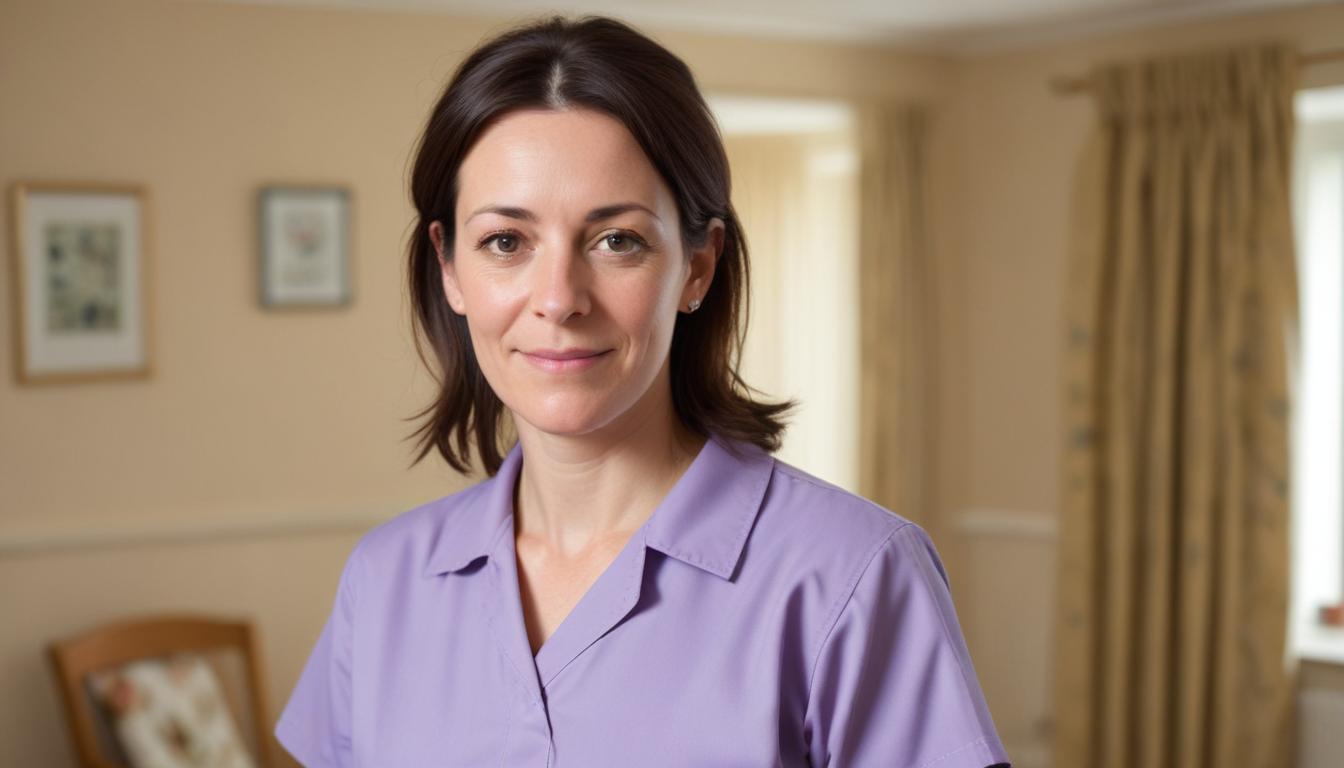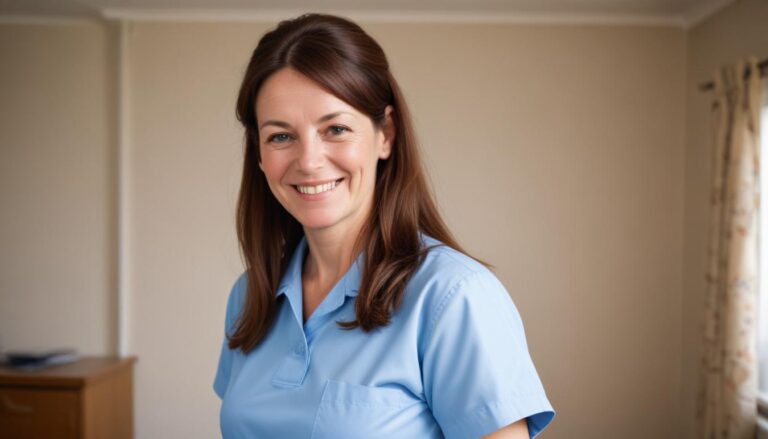This guide will help you answer the Level 1 Award in Introduction to Health, Social Care and Children’s and Young People’s Settings Unit 1.1 Define ‘protection of vulnerable adults’.
Definition of Protection of Vulnerable Adults
A vulnerable adult is someone aged 18 or over who needs care and support because of age, illness, or disability. They may be unable to protect themselves from harm or exploitation because of their situation. Vulnerable adults include those with mental health issues, physical disabilities, learning disabilities, and older adults who may be frail. Ensuring the safety and well-being of these individuals is a critical responsibility for society as a whole. Effective strategies for safeguarding vulnerable adults overview include community awareness, training for care providers, and the establishment of clear reporting mechanisms for abuse or neglect. By fostering an environment of support and vigilance, we can help protect vulnerable adults from potential harm and ensure that they receive the assistance they need.
Core Principles of Protection
Protection of vulnerable adults involves ensuring their safety and well-being. This includes preventing abuse, neglect, or exploitation. It’s about creating a safe environment where they are protected from harm and their rights are upheld. The main aim is to safeguard them from all types of abuse, whether physical, emotional, financial, or sexual.
Types of Abuse
Understanding the types of abuse is important to define protection:
- Physical Abuse: This involves causing physical harm, such as hitting, slapping, or restraining someone inappropriately.
- Emotional Abuse: This includes threats, isolation, or any behaviour that undermines a person’s self-esteem and well-being.
- Sexual Abuse: Any non-consensual sexual activity. Vulnerable adults might not understand what is happening or may be unable to give consent.
- Financial Abuse: Taking advantage of a vulnerable adult’s finances, including theft, fraud, and coercion concerning wills or property.
- Neglect: Failing to provide necessary care, which can lead to serious physical and emotional harm.
Legal Framework and Guidelines
Several UK laws and regulations guide the protection of vulnerable adults:
- Care Act 2014: Sets out the local authorities’ responsibilities in safeguarding vulnerable adults. It emphasises the importance of promoting well-being and preventing harm.
- Mental Capacity Act 2005: Provides a framework to protect and empower individuals who may lack the capacity to make decisions about their own care.
- Safeguarding Adults Boards: Each local authority area has a Safeguarding Adults Board, responsible for overseeing adult safeguarding arrangements and ensuring partner agencies work together effectively.
Safeguarding Policies and Procedures
Support workers must follow clear policies and procedures to protect vulnerable adults. These guidelines help identify, report, and manage any safeguarding concerns:
- Reporting Mechanisms: Know how to report suspicions or incidents of abuse. This often involves contacting a safeguarding lead or adult social services.
- Training and Awareness: Regular training to recognise signs of abuse and understand how to respond effectively.
- Confidentiality: Respect and protect the privacy of vulnerable adults while sharing necessary information with relevant authorities for their protection.
Role of Support Workers
As a support worker, you play a really important role in safeguarding vulnerable adults. This involves:
- Observation and Vigilance: Be observant of any changes in behaviour, appearance, or physical health that may indicate abuse.
- Building Trust: Establish a trusting relationship where individuals feel safe to disclose concerns.
- Promoting Empowerment: Encourage vulnerable adults to express their wishes and make informed decisions about their own lives.
- Advocacy: Speak up on behalf of those unable to do so for themselves, ensuring their voices are heard.
Practical Steps for Protection
Here are practical steps to support the protection of vulnerable adults:
- Listen and Take Seriously: Always listen to concerns raised by the individual or others. Take all allegations seriously.
- Document and Report: Keep detailed records of any signs of abuse or concerns. Report them following your organisation’s procedures.
- Support and Reassure: Provide emotional support and reassurance to the vulnerable adult, ensuring they know they are not alone and help is available.
- Regular Reviews: Conduct regular reviews of care plans and risk assessments to ensure ongoing safety and suitability.
The Need for Multi-Agency Working
Effective protection relies on collaboration between different agencies, including health services, social care, police, and voluntary organisations. Multi-agency working ensures a holistic approach and comprehensive support for vulnerable adults.
Partners might include:
- Local Authorities: Often the first point of contact for safeguarding concerns. They assess and coordinate care and support.
- Health Services: Provide medical treatment and support, identify signs of abuse, and contribute to safeguarding plans.
- Police: Investigate criminal aspects of abuse and ensure the safety of individuals.
- Voluntary Organisations: Offer additional support and advocacy services, helping to meet the individual’s needs.
Final Thoughts
Defining the protection of vulnerable adults means understanding who vulnerable adults are, recognising the types of abuse they might face, and knowing the laws and guidelines that safeguard them. As a support worker, your role is important in identifying and reporting abuse, providing direct support and care, and working with other agencies to ensure a comprehensive approach to protection. Always stay vigilant, informed, and responsive to ensure their safety and well-being.
Example answers for unit 1.1 Define ‘protection of vulnerable adults’.
Example Answer 1
Defining the protection of vulnerable adults means understanding who they are and the risks they face. A vulnerable adult is anyone over 18 who might need extra help because of age, illness, or disability. It’s essential to create a safe space where they’re protected from harm, abuse, exploitation, or neglect.
I need to keep an eye out for signs of abuse, such as unexplained injuries or sudden changes in behaviour. Whether it’s physical, emotional, sexual, financial, or neglect, knowing these signs helps me to act quickly. Learning about the Care Act 2014 and the Mental Capacity Act 2005 has helped me to understand the laws and guidelines that ensure their safety.
Training and following the right procedures are key to making sure we’re protecting vulnerable adults effectively. Reporting any concerns immediately and ensuring confidentiality while doing so is essential. My role also involves supporting and reassuring individuals, making sure they feel heard and protected.
Example Answer 2
As a care worker, protecting vulnerable adults means more than just meeting their basic needs – it means safeguarding them from any form of abuse. Vulnerable adults can be anyone over age 18 who require additional support because of factors like physical disabilities, mental health issues, or old age.
I need to be aware of the different types of abuse, such as financial (like stealing money), physical (hitting or restraining improperly), emotional (threats or isolating someone), sexual (nonconsensual actions), and neglect (failing to provide care). This understanding helps me to spot the signs and act promptly.
Knowing the legal frameworks like the Care Act 2014 and the Mental Capacity Act 2005 is essential. These laws guide us on how to support and protect individuals effectively. Our safeguarding policies and procedures are essential for my role – they help me know what steps to take if I suspect abuse. Regular training and being vigilant are key to my job.
Example Answer 3
Protection of vulnerable adults is about ensuring their safety and well-being. Vulnerable adults are those over 18 who may need care and support due to age, disability, or illness. This puts them at risk of abuse or neglect, making it really important that we as care workers are vigilant and proactive.
Recognising the different types of abuse – whether physical, emotional, sexual, financial, or neglectful – is part of my role. For example, financial abuse can involve taking control of someone’s money without their permission. My job involves observing for signs and acting to stop any harm.
Legal guidelines like the Care Act 2014 help us by laying out clear responsibilities and ensuring we work together with other agencies. Reporting mechanisms are in place so I know who to contact and what steps to follow. Building trust with those I care for is important, as it encourages them to express any concerns they have.
Example Answer 4
The protection of vulnerable adults means preventing harm and abuse against those who cannot fully protect themselves due to reasons like age, illness, or disability. A vulnerable adult is anyone over 18 who needs added care and support.
Understanding the types of abuse – such as physical, emotional, sexual, financial, and neglect – is essential. Physical abuse might be hitting or improper restraint, while emotional abuse could involve threats or isolation. If I notice any sign of these, it’s my responsibility to report it.
Legal frameworks like the Care Act 2014 and the Mental Capacity Act 2005 provide the guidelines for protecting vulnerable adults. They ensure that care plans are reviewed and updated regularly to support individuals effectively. Multi-agency working, meaning collaborating with other services like the police or health services, ensures a comprehensive approach to safeguarding.
Example Answer 5
As a care worker, protecting vulnerable adults involves ensuring their safety from harm, abuse, and neglect. Vulnerable adults are those over 18 who may require extra support due to age, illness, or disability.
It’s my job to identify signs of abuse, whether physical (like bruises), emotional (like withdrawn behaviour), sexual (unwanted sexual activity), financial (unexplained financial issues), or neglect (like poor hygiene or untreated medical issues). Knowing these signs helps me act swiftly to protect them.
Understanding the Care Act 2014 and the Mental Capacity Act 2005 helps in following the right procedures and legal requirements. Being trained and knowledgeable about safeguarding policies means I can respond effectively when there’s a concern. Creating a supportive environment where vulnerable adults feel safe and valued is also a key part of their protection.
Example Answer 6
In my role as a care worker, protecting vulnerable adults means ensuring their well-being and safeguarding them from any kind of abuse. Vulnerable adults are individuals over 18 who need extra help due to factors like age, illness, or disability.
Knowing the types of abuse – such as physical (e.g., hitting), emotional (e.g., verbal threats), sexual (e.g., unwanted sexual acts), financial (e.g., stealing money), and neglect (e.g., lack of proper care) – is fundamental. It’s important to observe for signs of these abuses to act quickly and protect the individual.
Working under laws like the Care Act 2014 and the Mental Capacity Act 2005 ensures we follow best practices. Understanding and adhering to safeguarding policies, as well as regular training, are essential for effectively protecting vulnerable adults. Collaborating with other services helps create a comprehensive and supportive network for their safety.
Subscribe to Newsletter
Get the latest news and updates from Care Learning and be first to know about our free courses when they launch.







